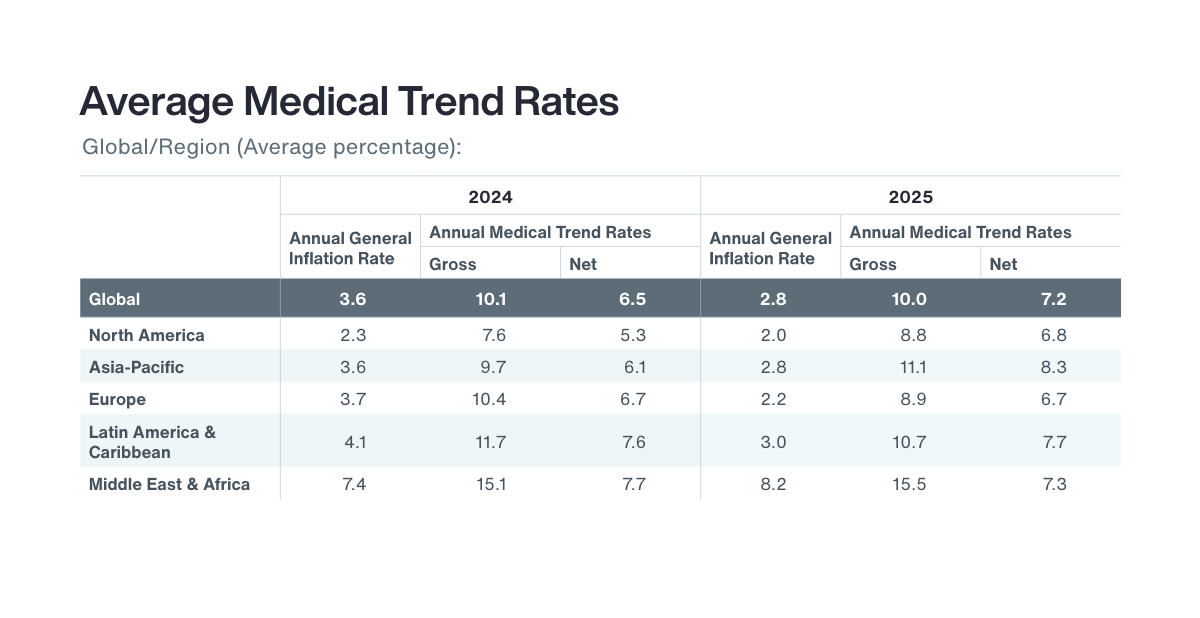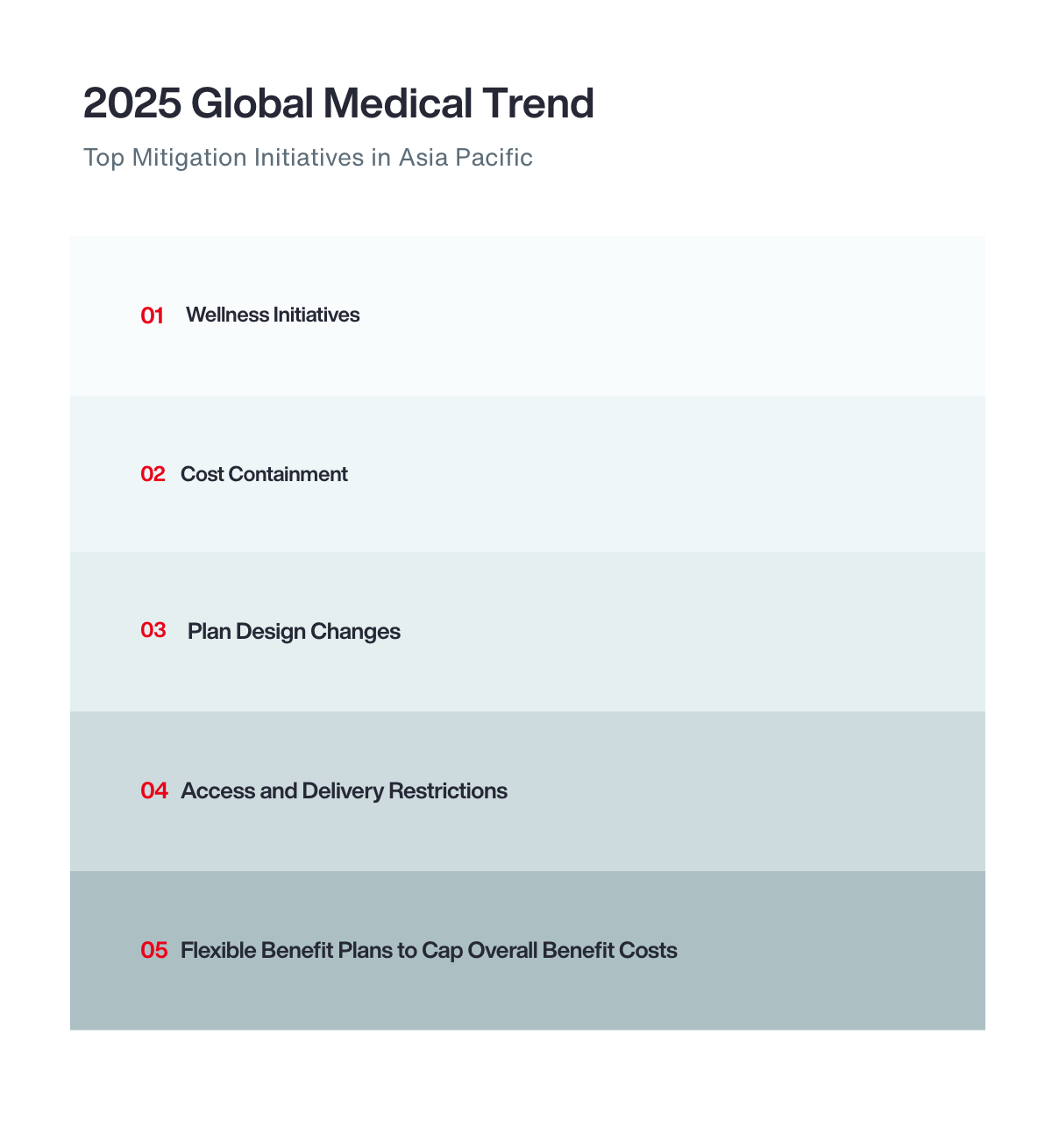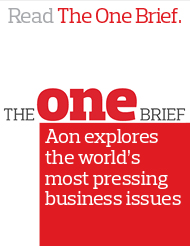Keeping Health Benefit Costs in Check: Three Insights for HR Leaders
As medical inflation continues to drive up employee health benefit costs across the APAC region, now is the time for employers to reassess their benefit strategies—balancing affordability with employee needs while leveraging evolving insurance market dynamics for better value.
Key Takeaways
- Although 2025 is likely to see the peak for medical inflation in APAC, employers can expect to bear the cost of increased health plan premiums in years to come.
- More competitive pricing options are gradually returning to the market, making it worth revisiting plan structure and inclusions to secure better value.
- Flexibility on plan design and funding can help organisations manage ongoing costs, but data is essential for informing effective strategies.
As the upward trend in medical inflation rates continues in APAC, employers are being challenged with the rising cost of employee medical benefit plans, with insurers seeking to recoup costs following a significant increase in the volume and size of claims after the end of COVID-19 restrictions, leading to substantial premium increases.
Aon’s 2025 Global Medical Trend Rates Report forecasts the expected percentage increase in medical plan costs per employee – both insured and self-insured. With an estimated increase of 10% for 2025 at a global level compared with 10.1% in 2024, the worldwide trend is stable. In APAC, however, the projected increase is notably higher for the coming year – 11.1% for 2025 compared with 9.7% for 2024. While Middle East and Africa continues to lead the world with an increase of 15.5%, APAC is forecast to have the biggest increase in gross average and the highest net rate of 8.3%, considering underlying inflation for the region.

Medical Inflation Outlook for APAC
With APAC continuing to experience healthcare cost increases well ahead of inflation, medical plan benefits are becoming a larger component of overall rewards spend. There appears to be light at the end of the tunnel for HR leaders, though, with industry experts suggesting APAC has lagged the global trend, with 2025 likely to be the peak for the region.
“Countries like China and Thailand lifted COVID-19 restrictions much later – and our data shows that their claims trend is different to Singapore, Hong Kong and Malaysia, where we saw the pent-up demand for health services quickly absorbed by the market,” says Andrew Merrilees, chief executive officer, Group Corporate Solutions at AlA Group. “This demand has been driven, in part, by people becoming more health conscious in the wake of the COVID-19 pandemic. We have noted a significant rise in the number of health checks employees are having, for example, which is good for patient and employee outcomes but leads to demand for more diagnostic tests and imaging, and that has played a major role in cost per claim increases.”
Alan Oates, head of regional advisory & specialty, Health Solutions, Asia Pacific at Aon adds that chronic disease and delayed cancer diagnoses have been key in fuelling a higher level of health plan claims. “The high medical trend rate can be attributed to a higher incidence of cancer and chronic conditions than before the COVID-19 pandemic” he says. “We believe the biggest rises in medical utilisation and inflation are now behind us in APAC but recovery in insurer profitability will keep medical trend rates in double digits for 2025 and 2026.”
Three Findings for Employee Benefits in APAC
This perspective points to an immediate need for employers to rethink their health benefit strategies to ensure they are balancing affordability with employees’ needs. With costs expected to surge in 2025, particularly in New Zealand, Papua New Guinea, Thailand, and Vietnam, we share three points to keep in mind when designing and structuring health insurance plans in the current economic environment.
#1 Evolving Healthcare Plan Design and Funding
Taking a flexible approach to benefit plan design and funding can help organisations strike a balance between costs and employee satisfaction. Aon’s 2024 Global Benefits Trends Study found that 60% of employers worldwide are turning to flexible benefit plans as a cost management solution. Having more options is also desirable for workers. According to Aon’s 2025 Employee Sentiment Study, 63% of global employees say they would be willing to sacrifice existing benefits in favour of having a better choice of benefits,
“More than at any point in the last 10 years, we have observed employers making changes to plan design due to affordability concerns,” says Oates. “Flexibility and choice have become essential tools because employees generally value shorter term flexibility and choice more than longer term core benefits.”
As Jon Ogilvie-Forbes, regional head of group underwriting, Health, APAC for Allianz points out, restricting or tiering the healthcare provider network is another approach that insurers and corporates are trialling in the more mature APAC healthcare markets. “Singapore and Hong Kong are taking the lead from European markets with tiered networks,” he says. “Employers are also implementing co-payments and plan limits to transfer a portion of the cost back to the user.”
According to Sukhikh, “Sophisticated analytics tools, such as Aon’s Health Risk Analyzer, are also helping companies leverage a growing volume of multi-source data, to help predict population cohorts that are more likely to be large claimants in the future. Technology is helping us identify high risk populations and deliver cost saving interventions faster than ever.”
#2 Prevention Through Effective Wellbeing Programs
With support for emotional health being the fastest growing claim in Aon’s APAC client portfolio, wellbeing initiatives designed to mitigate stress are also contributing to the double-digit medical trend. But it isn’t only mental health that wellbeing programs are targeting to bring down the frequency and cost of claims. “Musculoskeletal claims are an issue in every APAC market,” says Merrilees. “A recent government health study estimates that a third of the workforce have musculoskeletal pain.” This is leading to employers and insurers targeting wellbeing initiatives to address physical inactivity, poor stress management, hypertension, high cholesterol and other risk factors driving chronic conditions that lead to adverse future claims.
“We are encouraging clients to seek a more integrated value-based outcome from insurers where they are cooperating in the sharing of data and investment in wellbeing,”
Although studies show wellbeing interventions are the top mitigation strategy used by organisations in APAC1 to manage the risk of rising healthcare costs, many HR leaders still question the ROI of wellbeing programs from a cost management perspective. “Wellbeing programs are increasingly integrated and aligned with prevention strategies, and they are being included in coordinated care to support employees along each step of their wellbeing journey”, says Sukhikh.

Dr Ethan Lim, formerly head of clinical strategy and partnerships at Fullerton Health agrees and suggests that few organisations have a good grasp of what wellbeing is and how to measure cost effectiveness of wellbeing programs. “To companies that are struggling to show ROI from wellbeing, I would ask, ‘Are you designing your wellbeing programs in the right way that will help your segment of employees?’ We need to examine the design and reach of wellbeing programs more closely and understand what kind of ROI we are seeking”.
Using the example of walking programs that can reduce the cost of lower back pain claims for employers by 50%, Dr Lim suggests integrating wellbeing into healthcare programs need not be difficult, costly or complicated - or even require external providers. “It’s only difficult because those sorts of things require significant cultural change and culture change is hard to implement – ensuring people take walking meetings and so on. We need to become more imaginative with how we implement wellbeing in our organisations”.
#3 Look for Value in a Changing Insurance Market
This evolving landscape presents an opportunity for employers to revisit plan design and pricing strategies with insurers. By looking at market conditions in their location and negotiating based on claims data and risk profiles, companies can be in a stronger position to agree on terms that will keep their health benefits program viable as costs remain volatile.
“Although most insurers are still raising premiums, we are seeing a slight softening in some markets where risk appetites are returning among carriers that were quick to take corrective measures in previous renewal periods,” says Sukhikh. “As those carriers can now offer competitive pricing terms, we are encouraging clients to test the market as there is increasing value in doing so.”
To learn more about flexible benefits and other strategies to manage the cost of employee benefits, watch the webinar recording or contact us.
1. Aon’s 2025 Global Medical Trend Rates Report


